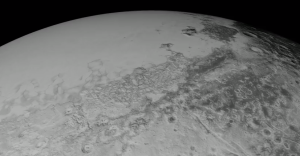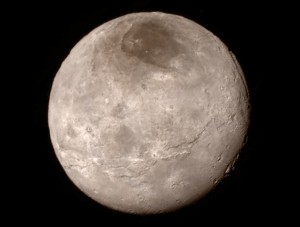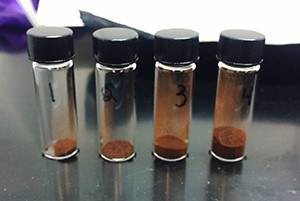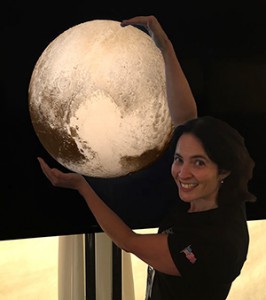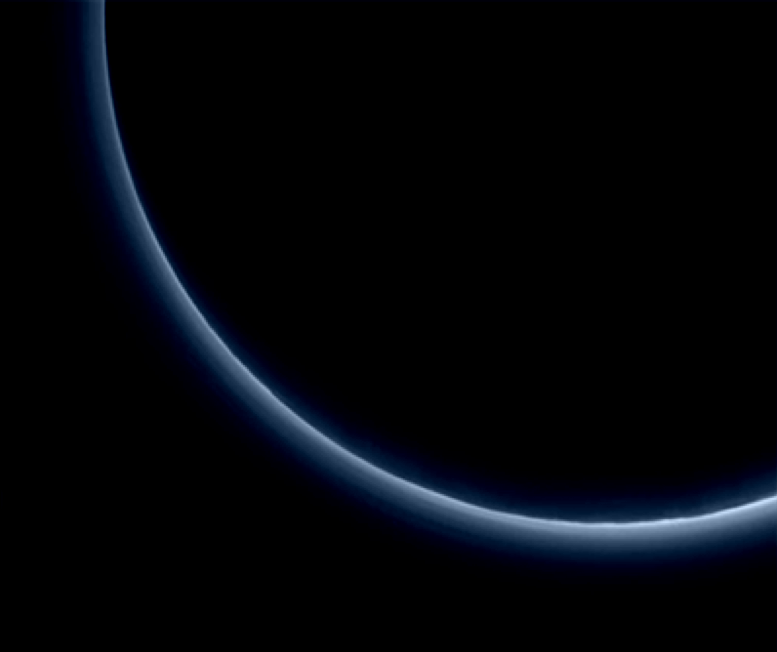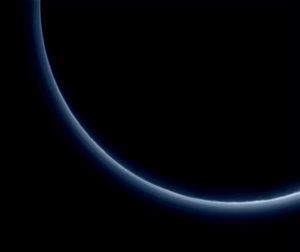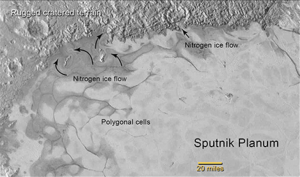Today’s post is written by Alex Parker, a research scientist at the Southwest Research Institute in Boulder, Colorado, working on NASA’s New Horizons mission.
It’s approaching dusk on an alien world, and the only eyes to witness the scene belong to a machine that has traveled billions of miles to be here at just this moment.
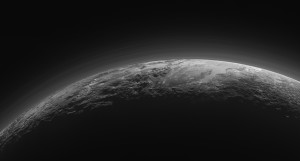
Sunlight is filtered through an atmosphere filigreed with layers of haze, and even areas that should be cast into total darkness by the shadows of vast mountains are illuminated by a diffuse glow. Light streaming through gaps between those mountains falls obliquely on a low-lying haze bank, revealing itself as luminous beams in the sky, like those of a dramatic Earthly sunset.
The world is Pluto, the far-from-home machine is New Horizons, the atmosphere is a tenuous skin of nitrogen, carbon monoxide, and methane gases, and the hazes permeating that atmosphere are suspended organic particulates.
Few — if any — of us expected such an alien, remote, and hostile place to look so familiar in twilight.
Hazes by day
Just a few days after New Horizons’ flyby of Pluto, a new set of images came down that surprised us all: a simple look-back at the edge of Pluto, backlit by the sun. Very little of Pluto’s surface was to be illuminated in these images—just a tiny sliver of a crescent. When the images appeared, several of us who routinely process New Horizons images to enhance their detail opened them to see what we could do with them.
And our jaws dropped.
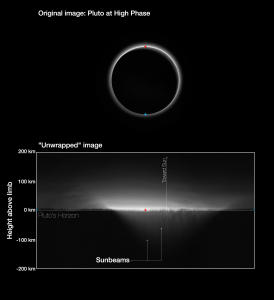
Pluto was surrounded by a brilliant halo, extending far above its surface. The halo was not smooth, either; it was cut through by sharply-defined brighter layers. This halo was our first glimpse of Pluto’s stunningly complex atmospheric haze. We had known for decades that Pluto had an atmosphere and that it might be hazy. What we didn’t expect was just how bright and structured those hazes might be.
We set to work trying to understand what these images might tell us about the nature of the hazes and the dynamics of Pluto’s atmosphere. One of the ways we examine the structure within these images is to “unwrap” them—to peel the planet’s circular horizon back into a straight line. In these unwrapped images, structures that extend radially within and beyond the edge of the planet stand vertically, while concentric layers within the atmosphere appear as stacked horizontal features.
In these unwrapped images, the hazes appear brighter in the evening sky than in the morning sky, possibly suggesting that the hazes and their distribution are controlled by diurnal processes, becoming more concentrated over the course of Pluto’s long day and depleting during Pluto’s long night. Perhaps the haze particles gently rain down onto the surface through the night, staining Pluto with a distinctive reddish cast, or perhaps other atmospheric processes act to move and concentrate the haze.
Sunbeams on the Horizon
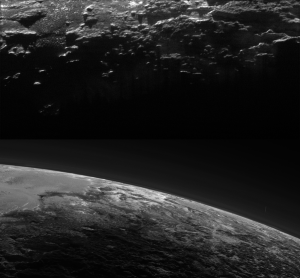
Another feature in the unwrapped images struck us: subtle bright traces running inward along the planet’s edge, well beyond where the sunlight should be touching its surface. These had the characteristics of “crepuscular rays” — beams of sunlight illuminating particulate in the atmosphere — cast between gaps in topography near Pluto’s terminator. Simply put, we thought we might be seeing sunbeams in Pluto’s twilight sky.
The most spectacular and unequivocal example of these came as their counterpart: long, narrow rays of shadow cast in an otherwise bright haze. These appeared in the recent stunning Ralph image of Pluto’s landscapes in twilight. Their presence indicated that Pluto’s hazes are not limited to high altitudes— some must hug the surface, similar to a low cloud deck or a fog bank. This same MVIC image revealed many more fine, high-altitude haze layers, including discontinuous, quasi-periodic structures suggestive of shaping by atmospheric waves.
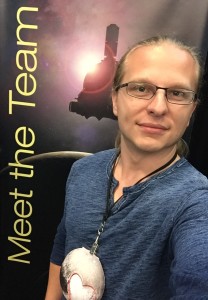
More images of Pluto’s skies are coming back from New Horizons. With each one we learn more about this distant world’s delicate atmosphere with its tracery of hazes, but we still have many questions left to answer. How does Pluto’s atmosphere interact with and shape Pluto’s surface? How is the atmosphere evolving as Pluto’s orbit caries it farther from the Sun? How do Pluto’s hazes relate to those of other worlds — including the hazes likely present in the Earth’s early atmosphere?
Earth, again. There is much about Pluto that is exotic and superficially incomprehensible, but beneath that there is a constant theme of familiarity. We can imagine that a far-flung human explorer, standing on the cracked and pitted ice of Tombaugh Regio, might gaze upward at the twilight sky and think it looked a bit like home.

